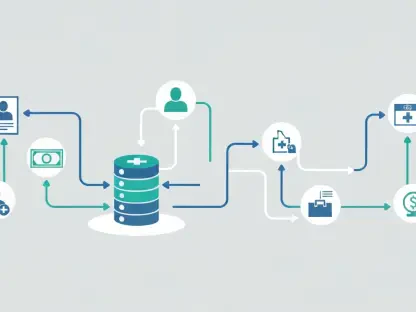In today’s digital landscape, APIs are essential for smooth application interactions. Nonetheless, ensuring these APIs perform optimally can be a challenge, making observability a crucial aspect to manage them effectively. Unfortunately, certain anti-patterns can hinder the effectiveness of observability for APIs. This article aims to identify seven key missteps that should be avoided to maintain robust API observability.
Understanding User-Centric API Observability
The Human Element in API Design
APIs serve as vital links between software entities, weaving user requirements with digital capabilities. However, their role surpasses that of mere connectors; they encapsulate the dialogue between human needs and technological offerings. It’s imperative to remember that APIs are forged with people in mind—the developers who integrate them and the end-users whose interactions are mediated by their functionality.The effectiveness of an API is not solely quantifiable by system metrics but also by user contentment and engagement. Neglecting this aspect can lead to a narrow focus on technical improvements, thereby missing the mark on user satisfaction. The human factor should be the beacon that guides every enhancement and decision in the lifecycle of an API. It’s about striking a balance between seamless functionality and a pleasant developer experience, ensuring that usability remains at the heart of its operation. This human-centric approach ensures that APIs not only perform consistently but also resonate with and fulfill the expectations of those who use them.
Beyond API Monitoring
Traditional API health checks are often just the tip of the iceberg, focusing on surface-level metrics like uptime. This is a basic but incomplete measure of API wellbeing. True API observability demands a comprehensive inspection of the API’s internal mechanisms. Simply monitoring external signs fails to expose the nuanced interactions within the system.
The Inadequacy of API Access Logs for Troubleshooting
The Limitations of Access Logs
While access logs can be incredibly useful resources for diagnosing issues with APIs, their effectiveness is somewhat limited, especially in the context of sophisticated microservices architectures. These logs often provide a straightforward record of events but lack the nuanced context necessary to fully understand and correct deeply rooted issues.
The Value of Distributed Tracing
As traditional access logs fall short in handling the intricate web of microservice interactions, distributed tracing emerges as a vital observability tool. It moves beyond logs, providing a vivid blueprint of service interplay. This method is crucial for engineers to identify and troubleshoot inefficiencies and slowdowns within a microservices architecture.
The Pitfalls of Disparate Observability Practices
The Issue with Disparate Tools
In many large organizations, teams tend to operate in isolation, each using a different set of tools and data sources to keep an eye on their operations. This situation meets specific team requirements but creates a fragmented view of the organization’s system health.
The Advocacy for Open Standards
For effective observability, open standards such as OpenTelemetry are vital. These protocols enable a variety of tools to interoperate and exchange data, leading to better decisions.
The Anti-Pattern of One-Size-Fits-All Observability
API Architecture Diversity and Observability
APIs are delivered via a plethora of architectural styles such as REST, GraphQL, gRPC, and event-driven architectures, each with its own specific observability hurdles.
Observability Tailored to API Styles
In today’s tech landscape, customizing observability to fit different API architectures is not just a perk; it’s essential.
The Overlooked Potential of Pre-Production Observability
The Importance of Early Observability Implementation
Integrating observability practices from the get-go in software development is critical and should not be a hurried add-on after deployment.
Starting API Observability at the Gateway Level
Challenges of Tracing at the Microservice Level
While tracing microservices provides insights, it might omit the early stages of a transaction such as authentication or API routing.
The Full Spectrum of User Transactions
Capturing the entirety of a user’s transaction is crucial to comprehending the nuances of their experience.These principles underscore the need for a forward-thinking observability strategy that evolves with the API landscape. By avoiding the critical missteps outlined above, professionals can ensure their APIs serve their users effectively, offer delightful experiences, and remain robust under any digital demands.









